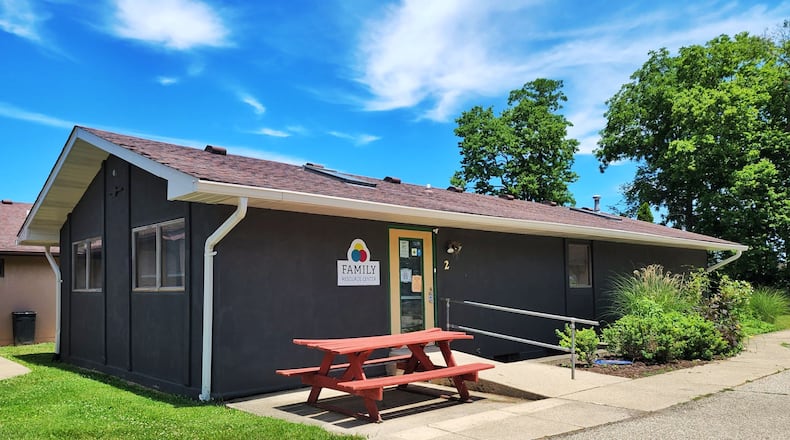Use of the money is limited to responding to a public health emergency and negative economic impacts, which includes affordable housing, revenue loss for the city, premium pay and water, sewer and broadband infrastructure.
Assistant City Manager Jessica Greene led the discussion using a slide presentation outlining possible uses for the money as previously reviewed to be in line with council priorities established earlier this year. Those priorities are climate sustainability, economic development and housing for all.
She noted a decision on use of the money must be made by 2024 and it must be used by 2026.
She reminded Council they have already spent $483,097.44 of the money on six projects, including adding public WIFI to the Oxford Community Park and completing the installation of ADA accessible curbs throughout the city.
Greene said the work session was intended to narrow the choices through Council input so staff could further research the priorities to obtain accurate numbers for them. Eventually, they will bring legislation to Council to finalize the use of the ARPA funds.
“City Council has indicated an interest in voting on the presented items,” Greene said later. “City Council indicated they want the programs up for a vote in the next several months. The easy ones will be done sooner. We will have to work with the attorney on property purchases as we do our due diligence.”
She emphasized this is “once-in-a-generation” money so projects using the it must be self-sustaining and not dependent on future funding.
After two rounds of “stickering” Council members had prioritized the projects they wanted to focus staff attention on and gather more information. They were:
- A plan for city property in Western Knolls
- $25,000 for the Family Resource Center for case management, hoping that Short-Term Rental tax will support the program in the future
- $900,000 to purchase housing and work with a nonprofit to manage it, which will require an RFQ to find that nonprofit housing partner
- $900,000 to purchase commercial space and work with a nonprofit to manage it, with a plan to work with the Community Improvement Corporation as the partner
One of the easier ones would likely be developing a plan for the Western Knolls property, expected to cost approximately $50,000.
That property has been in various discussions in recent months, including as a location for a new Senior Citizens building. There are 47 acres of land in the site and the funding would be used to create a “schematic design” for the land. That would include use of a portion of the land to be established as a Community Land Trust and deed-restricted “pay it forward” area.
Also gaining favor with members of Council was a plan to give $25,000 of the ARPA money to the Family Resource Center to continue a program begun in 2020 to help local residents find affordable housing. The idea is to provide money to continue to pay a case manager for this work with income from the city’s short-term rental tax to be used for this in the future. Those STR funds are estimated at $20,000 a year. This is in addition to the $48,000 annual contribution the city budgets for the program.
“In 2020, we gave $21K additional funds to the FRC for a .6 FTE case manager. Their program was able to find 13 families permanent housing after using their cold shelter,” Greene wrote in the slide presentation outlining the options.
Each of the other two options involve expenditure of $900,000 for purchase of property – one to further help people find rental housing and the other to support local economic development.
In her slide presentation summary of both of these options, Greene acknowledged the amount was relatively small and insufficient for large-scale programs.
For that reason, Councilmember Jason Bracken said his priority is housing and would prefer to have both sums of money put into the rental housing option to enhance that program.
The rental housing option would use the money to purchase property to be managed by a nonprofit agency. The city would purchase apartment complexes or homes and management would be done by the nonprofit chosen after a request for proposals. Rents would go to the nonprofit to be used for maintenance and future additional purchases.
Advantages include making housing available to new customers and distributing the affordable housing around the community rather than clustering. Council can always add to the fund or seek grants to expand it over time.
In addition to the relatively small startup, the disadvantage she noted is that that the plan does not help keep current affordable units.
The economic development option is similar to the rental housing one, in that the city would use the fund to purchase first-floor properties of commercial district to attract and control occupancy. Here, again, a nonprofit would be engaged to attract new tenants and manage the property.
Greene said there are strong models of this in other communities, including Hamilton and Cincinnati, and it would allow the city to rent to preferred businesses.
Disadvantages include uncertainty about what might be for sale in the price range and coordination would be required with a condo-style ownership. The business and apartments above could have issues including things like utility access.
Mayor Bill Snavely suggested forming a land trust, which has been discussed at other times.
“It seems to me, if we had a land trust, it could do both commercial and residential,” the mayor said.
Council member Glenn Ellerbe offered an opposite thought, saying, “In my experience, these two areas work best separately.”
David Prytherch said he would like to see some money allocated toward climate sustainability while Amber Franklin said she likes the idea of purchasing something.
About the Author
